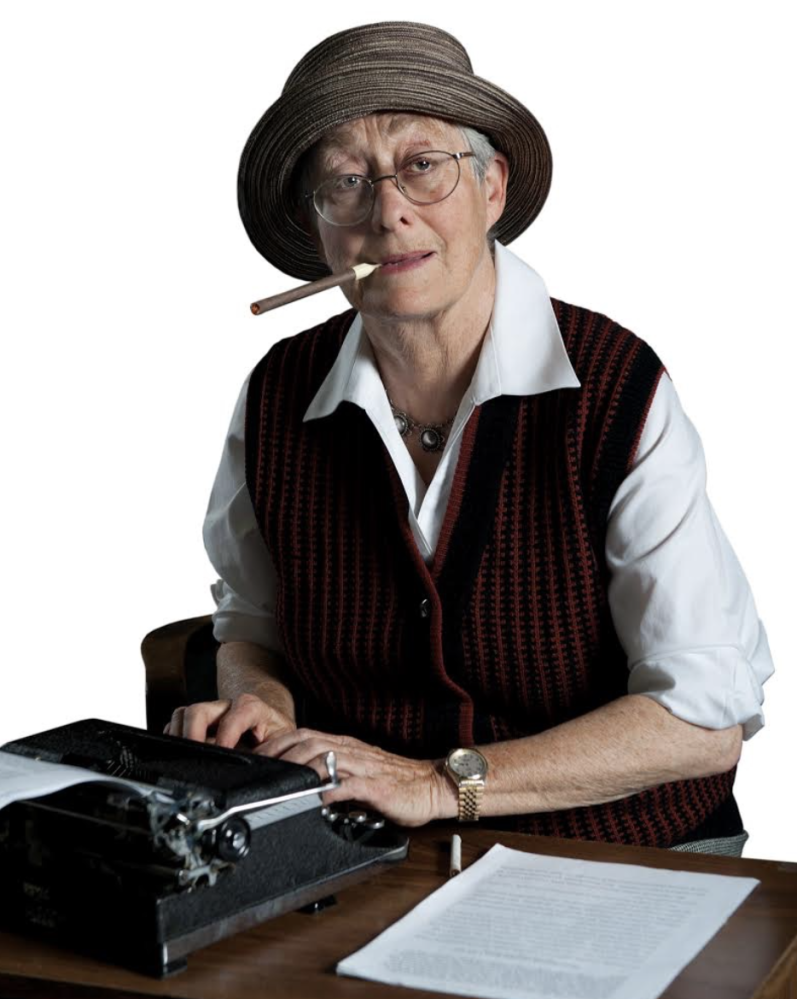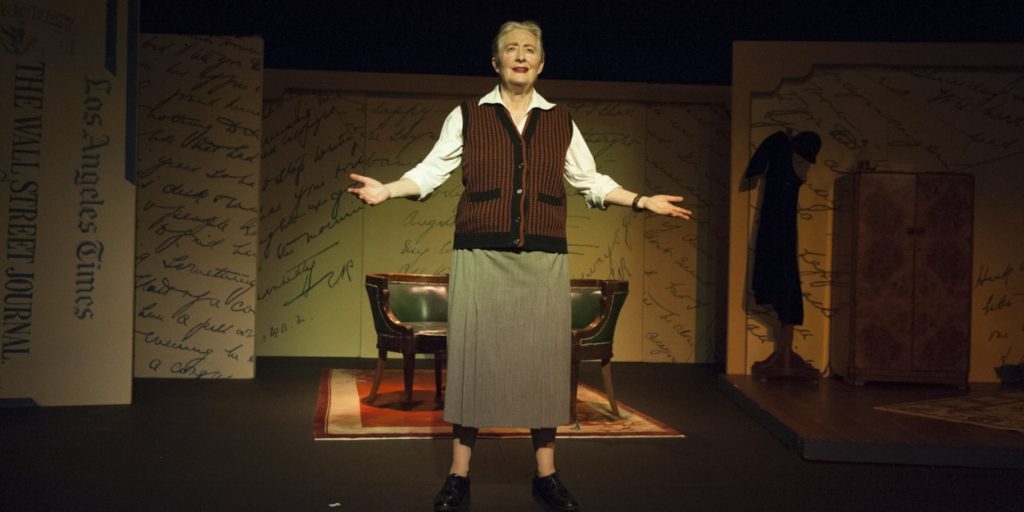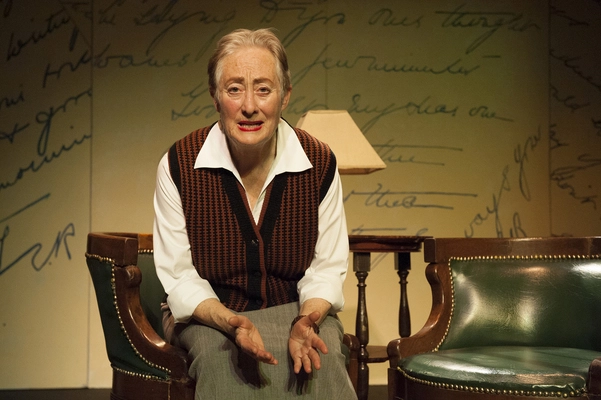
“Hick: A Love Story” Burns with Lesbian Passion—at The Marsh
Terry Baum Affirms A Woman’s Love for Eleanor Roosevelt
by Robert M. Gardner
Lorena Hickok was the first woman reporter to have her by-line on the front page of the New York Times. She meets Eleanor Roosevelt during FDR’s first presidential campaign and their attraction is immediate. As soon as Lorena enters Eleanor’s life, the floodgates of emotion open and a real love affair takes off.
Terry Baum portrays Lorena Hickok beautifully. You can tell soon after the play begins that Terry Baum loves Hick. Baum portrays Hickock with a passion that speaks volumes about her adulation of this remarkable woman.
Baum appears as a mature woman, wearing a plain brown dress, with sensible black shoes, and a warm, comfortable, purple sweater. The newspapers describe Hick as being “rumpled, fat, and masculine.” In her plain, 40s reporter’s skirt, Hick seems far from someone who would be Eleanor Roosevelt’s love interest, but appearances can deceive.
Hickok’s writing and her personality attract Eleanor. When Hick died, she donated 18 boxes of Eleanor’s letters to the FDR Presidential Library at Hyde Park. Hearing the First Lady’s words, we cannot doubt their love affair.
Although this one-woman play is equally about the revered Eleanor, she is present only through the letters she wrote to Hick—as Baum recites them. These letters reveal Eleanor Roosevelt more deeply than we ever knew this monumental figure. Eleanor opened so many doors for women, for the poor, and the dispossessed. She fought for her husband and for the country with equal ferocity.

Given all of Eleanor’s ground-breaking work, we are surprised to learn about her loneliness and rejection. Unloved by mother and mother-in-law, she was judged as “plain,” unfit to be a wealthy showpiece debutante. Defiantly, she bypasses that trivial role to become a leading feminist, the most powerful woman in the world.
Homosexuality was not openly accepted, but it was always present. Newspapers refer to Hick as “First Friend.” Still, both were aware that they needed to be discreet. Eleanor writes, “We must be careful this summer & keep it out of the papers when we are off together.”
Baum brilliantly transmits Hick’s wide range of emotions—from the schoolgirl thrill of discovering that her attraction to Eleanor is returned to the mature connection they develop over time. Showing surprise that the reserved Eleanor should be open to a lesbian relationship, Eleanor responds: “I went to an English school.”
Both women are politically astute, and both express a strong social conscience. After FDR’s election, Hick travels the country as an investigator for the Federal Emergency Relief Administration. Her letters to Eleanor and her boss Harold Ickes vividly depict the Depression’s horrible living conditions. Hicks’ reports contributed significantly to FDR’s New Deal programs.
Pat Bond, who did much of the original research, wrote a book about the letters which became the basis for Baum’s “Hick: A Love Story.” The heartwarming play shows two women who gave so much to the nation. And hey gave the gift of unreserved love to each other. “Hick” celebrates two women who loved deeply and truly.

“Hick” by Terry Baum & Pat Bond, directed by Sarah Albertson & Bill Peters, at The Marsh, San Francisco. Info: themarsh.org – to July 14, 2024.
Cast: Terry Baum